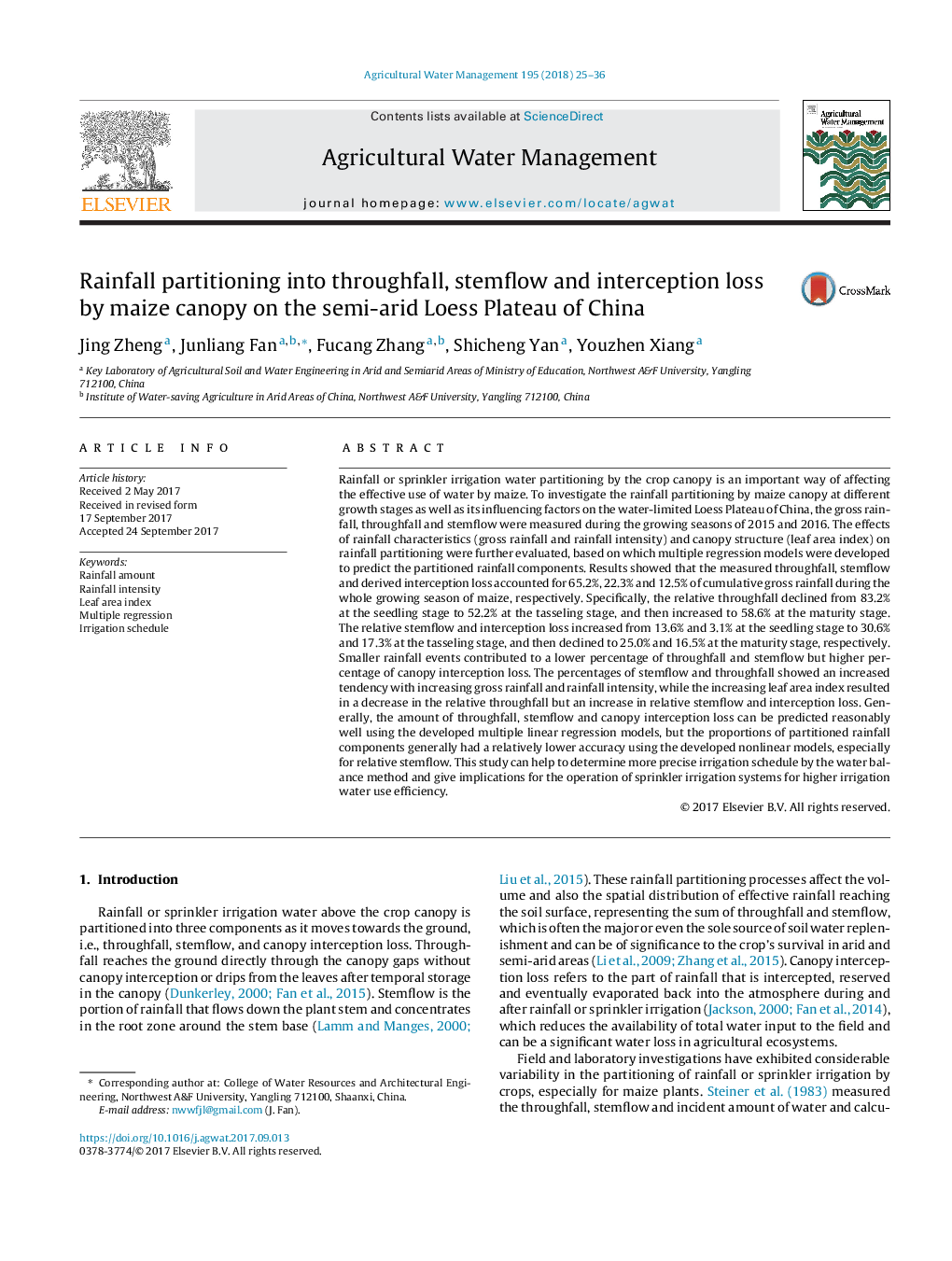| Article ID | Journal | Published Year | Pages | File Type |
|---|---|---|---|---|
| 5758233 | Agricultural Water Management | 2018 | 12 Pages |
Abstract
Rainfall or sprinkler irrigation water partitioning by the crop canopy is an important way of affecting the effective use of water by maize. To investigate the rainfall partitioning by maize canopy at different growth stages as well as its influencing factors on the water-limited Loess Plateau of China, the gross rainfall, throughfall and stemflow were measured during the growing seasons of 2015 and 2016. The effects of rainfall characteristics (gross rainfall and rainfall intensity) and canopy structure (leaf area index) on rainfall partitioning were further evaluated, based on which multiple regression models were developed to predict the partitioned rainfall components. Results showed that the measured throughfall, stemflow and derived interception loss accounted for 65.2%, 22.3% and 12.5% of cumulative gross rainfall during the whole growing season of maize, respectively. Specifically, the relative throughfall declined from 83.2% at the seedling stage to 52.2% at the tasseling stage, and then increased to 58.6% at the maturity stage. The relative stemflow and interception loss increased from 13.6% and 3.1% at the seedling stage to 30.6% and 17.3% at the tasseling stage, and then declined to 25.0% and 16.5% at the maturity stage, respectively. Smaller rainfall events contributed to a lower percentage of throughfall and stemflow but higher percentage of canopy interception loss. The percentages of stemflow and throughfall showed an increased tendency with increasing gross rainfall and rainfall intensity, while the increasing leaf area index resulted in a decrease in the relative throughfall but an increase in relative stemflow and interception loss. Generally, the amount of throughfall, stemflow and canopy interception loss can be predicted reasonably well using the developed multiple linear regression models, but the proportions of partitioned rainfall components generally had a relatively lower accuracy using the developed nonlinear models, especially for relative stemflow. This study can help to determine more precise irrigation schedule by the water balance method and give implications for the operation of sprinkler irrigation systems for higher irrigation water use efficiency.
Related Topics
Life Sciences
Agricultural and Biological Sciences
Agronomy and Crop Science
Authors
Jing Zheng, Junliang Fan, Fucang Zhang, Shicheng Yan, Youzhen Xiang,
